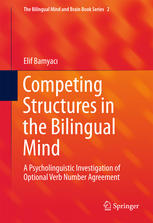

Most ebook files are in PDF format, so you can easily read them using various software such as Foxit Reader or directly on the Google Chrome browser.
Some ebook files are released by publishers in other formats such as .awz, .mobi, .epub, .fb2, etc. You may need to install specific software to read these formats on mobile/PC, such as Calibre.
Please read the tutorial at this link: https://ebookbell.com/faq
We offer FREE conversion to the popular formats you request; however, this may take some time. Therefore, right after payment, please email us, and we will try to provide the service as quickly as possible.
For some exceptional file formats or broken links (if any), please refrain from opening any disputes. Instead, email us first, and we will try to assist within a maximum of 6 hours.
EbookBell Team

4.4
102 reviewsThis volume combines psycholinguistic experiments with typological investigations in order to provide a comprehensive exploration of the linguistic structure of verb-number agreement in bilingual speakers, with a particular focus on the Turkish language. It takes as its starting point the question of which linguistic structures pose difficulties for bilingual speakers, and then proceeds to evaluate the question by using the interface phenomenon of optional verb number agreement. In doing so, this volume investigates how the bilingual mind handles grammatical structures that demand high processing sources, working towards a processing-based linguistic framework for the bilingual mind.
Beginning with a thorough survey of the current research of the interface phenomenon in the bilingual mind, the volume then proceeds to present two separate studies on each linguistic interface type, namely semantics-syntax interface and syntax-pragmatics interface, thus filling a number of gaps in the bilingualism research with regards to the interface phenomenon The results and conclusions of these studies are then integrated with current knowledge and research from the field within a theoretical and processing-based framework in order to explore new psycholinguistic insights for the bilingual mind, specifically the conclusion that the grammar of bilingual speakers is shaped according to cross linguistic tendencies. Ultimately, it provides a unified account and a comprehensive conclu
sion regarding the non-native-like patterns in grammar of bilingual speakers. Serving as a fascinating and timely resource, Competing Structures in the Bilingual Mind: An Investigation of Optional Verb Number Agreement will appeal to bilingualism researchers, clinical linguists, cognitive scientists, experimental linguists, and any linguist specializing in Turkic or Altaic languages.